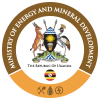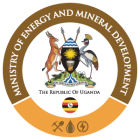
info@energy.go.ug
041 4344414
Mon - Fri 08:00 - 17:00
FAQ's
ContactInfo
- Plot 29, Amber House, 33 Kampala Road, Kampala
- 041 4344414
- info@energy.go.ug
- Mon - Fri 09:00 - 17:00
Frequently Asked Questions
Uganda continues to develop more hydropower plants, whose construction costs are thought to be cheaper. Is there really a future for nuclear in Uganda’s energy mix?
Uganda has abundant energy resources fairly distributed throughout the country. These include hydropower, biomass, solar, geothermal, peat, uranium and fossil fuels.
• The energy resource potential of the country includes an estimated 4,500 MW of hydro power, 1,650MW of biomass co-generation 1,500 MW of geothermal, 800 MW of peat, 460 million tons of biomass standing stock with a sustainable annual yield of 50 million tons, an average of 5.1 kWh/m2 of solar energy.
• Sustainable development and utilization of these resources is required to allow the current and future generations meet their energy needs.
• Currently, the major electricity supply options are renewable (Hydro 76%, Biomass 9.6%, Solar 4%) and Fossil (HFO 10.4%).
• The generation potential from hydro, biomass, geothermal and peat, if fully developed, cannot meet Uganda Vision 2040 targets.
• Therefore, to meet our target of 3,668 kWh electricity per capita consumption by 2040, nuclear energy among other sources must be integrated in the electricity generation mix.
Where is the site for the proposed Nuclear Power Plant?
Eight (08) potential sites were identified in Buyende, Nakasongola, Kassanda, Kiruhura and Lamwo Districts. This was done using a siting criteria and expert judgment to evaluate natural site-related phenomena that can have an effect on the nuclear power plant (e.g., faults, earthquake, flood, geology and soil properties, meteorology, cooling water source), and safety-related characteristics influencing the impact of the plant on the site (e.g., population distribution, dispersion in air and water). These were ranked using ranking criteria to arrive at a candidate nuclear power plant site.
The proposed site for the Nuclear Power Project is in Kasaato Village, Kidera Subcounty, Buyende District with alternative sites in Nakasongola and Kiruhura Districts.
How much land is required for the Nuclear Power Plant?
The Ministry of Energy and Mineral Development plans to acquire 30sqkm of land which will host the 2000MW nuclear power plant, its auxiliary facilities, allow demarcation of exclusion zone and low population zone, and future expansion of the nuclear power capacity at the same site. This land will be gazetted as Special Planning Area and will be acquired over a timeframe of three (3) years. Upon completion of Resettlement Action Plan (RAP) study, land will be acquired by compensating the Project Affected Persons (PAP) starting with the exclusion zone.
What are the expected benefits for the host community?
Construction of a nuclear power plant provides economic growth and creation of jobs. The construction period of a nuclear power plant requires at least 2000 skilled and experienced workers on the site at the peak of the construction period. The majority of the labour required to construct a new nuclear power plant is craft labour and accounts for over 60% of the total on-site labour during plant construction. The host community is expected to benefit by getting jobs during construction and operation of the Nuclear Power Plant, revenue such as royalties for the District Local Government, development of social infrastructure such as access roads, schools, hospitals, markets, hotels, etc. and overall improvement of livelihood.
What are the possible risks from a Nuclear Power Plant?
- Radioactive waste The biggest environmental concern is that nuclear power plants produces radioactive waste. The radioactive waste from a nuclear power plant is of a much lower volume and the national regulatory framework and management systems are being strengthened to ensure radioactive waste from nuclear power plants does not pose a danger to the environment.
- The possibility of a nuclear accident. As in other industries, the design and operation of nuclear power plants aims to minimize the likelihood of accidents, and avoid major human consequences when they occur. There have been two major reactor accidents in the history of civil nuclear power – Chernobyl and Fukushima Daiichi. Chernobyl involved an intense fire without provision for containment, and Fukushima Daiichi severely tested the containment, allowing some release of radioactivity. These are the only major accidents to have occurred in over 18,500 cumulative reactor-years of commercial nuclear power operation in 36 countries. The evidence over six decades shows that nuclear power is a safe means of generating electricity. The risk of accidents in nuclear power plants is low and declining due to improved reactor designs and stringent regulation. The consequences of an accident or terrorist attack are minimal compared with other commonly accepted risks. Radiological effects on people of any radioactive releases can be avoided.
- Negative effects of radiation exposure. Exposure to radiation for the public is only possible if a nuclear accident occurs. Otherwise, nuclear reactors are built to contain all the radioactivity in a containment structure. For workers in an operating nuclear power plant, radiation protection measures are taken to limit exposure to radiation.
What fuel is used in a Nuclear Power Plant?
Uranium based fuel is the most widely used fuel by nuclear power plants. Uranium is a naturally occurring mineral/metal in the earth crust. Before uranium is used in the nuclear power plants, it is processed to take it from the raw state to usable nuclear fuel. It is mined, milled, converted, enriched and then fuel is fabricated. One fuel assembly lasts for five years on average.
How is waste from the nuclear power plant handled?
A spent fuel and radioactive waste management strategy has been developed by Ministry of Energy and Mineral Development. The strategy recommends on how waste will be categorized and handled with variations from the low volumes such as spent radioactive sources to large and diffuse volumes, such as tailings from the mining and milling of ores that contain uranium and thorium, and their radioactive decay products.
How will the nuclear power plant be constructed?
The Nuclear Power Plant will be constructed through a Turnkey Contract (i.e. Engineering, Procurement, and Construction plus financing (EPC+F)). The Ministry of Energy and Mineral Development will acquire land and prepare support infrastructure such as access roads. The Ministry will enter into a contract with the EPC Contractor that will construct the Nuclear Power Plant. Under this approach, the Ministry with external support will monitor the project and ensure that the turnkey contract is implemented according to the agreed terms.
Is it a PPP or a private venture?
According to IAEA, the project-based model which has been widely used in large infrastructure projects, has never been used for Nuclear Power Projects. This is because the perceived value of the asset to which lenders will have access in the event of financial distress.
While there may be a large number of civil engineering companies capable of completing a half-built airport, it is unlikely that completion of a half built Nuclear Power Plant could proceed smoothly. The value to lenders of assuming ownership of such a facility in the event of financial distress in a project-based context is questionable and as a result they will be reluctant to lend to that project.
In addition, the nuclear power plant will be a strategic installation contribution 1000 MWe of baseload electricity on the grid from the first Unit. Despite the high capital cost of about USD 4.8bn for the 1000 MWe, there is need for Government ownership of the Nuclear Power Plant so as to influence the electricity tariff. The sovereign based model is the most common ownership approach especially for the first nuclear power plant. Therefore, the project will draw lessons from Karuma Hydropower Project and possibility of Government ownership assessed with a National Nuclear Energy Company operating and maintaining the nuclear power plant on behalf of Government of Uganda.
Nuclear technology supply is internationally controlled to prevent diversion of nuclear material for military purposes, thus engagement of nuclear technology vendor countries has started by signing Memoranda of Understanding with China National Nuclear Corporation (CNNC) and Russian State Atomic Energy Corporation (ROSATOM).
How will the nuclear power plant be financed?
Under a sovereign based model, investment in the NPP will be financed through contributions from the national (sovereign) budget for acquisition of land and preparing the support infrastructure and concession Government to Government loans for construction of the Nuclear Power Plant. Borrowing is expected to take place as part of overall Government borrowing, rather than being identified as being for specific NPP purposes, and lenders will implicitly have the same assurance that they will be repaid as they would enjoy if they were to lend to the national Government for general purposes (e.g. by buying its bonds).
Traditionally, Governments have been regarded as being highly likely to repay lenders, since they have a reliable source of stable revenues under their control – the tax base. Under the sovereign based model, the financial risk that the investment will not produce revenues sufficient to cover its costs and provide a return (profit) is ultimately borne by taxpayers. A contractual framework is needed to structure the project.
FAQS ON BIOETHANOL FOR BLENDING AND BLENDED PRODUCT
- What is Bioethanol and how is it produced?
Bioethanol, also known as ethyl alcohol, is a renewable fuel produced by fermenting sugars derived from plant material like corn, sugarcane, or cellulose and starch-containing materials (such as corn, cassava, sorghum, etc.)
For more information, follow this link
FAQS ON BIOETHANOL FOR BLENDING AND BLENDED PRODUCT

Amber House, Plot 29/33, Kampala Road
Kampala, Uganda
Mon – Fri: 8:00 am – 5:00 pm
- 041 4344414
Useful Links
- Energy Sector GIS Working Group
- Electricity Regulatory Authority
- Uganda Electricity Generation Company ltd
- Uganda Electricity Transmission Company ltd
- Uganda Energy Credit Capitalization Company
- Petroleum Authority of Uganda
- Uganda National Renewable Energy and Energy Efficiency
- The Atomic Energy Council
- Uganda National Oil Company Limited
- Uganda National Mining Company
News & Updates
The latest news, articles, and resources, sent straight to your inbox every month.
© 2025 Ministry of Energy and Mineral Development – All rights reserved.